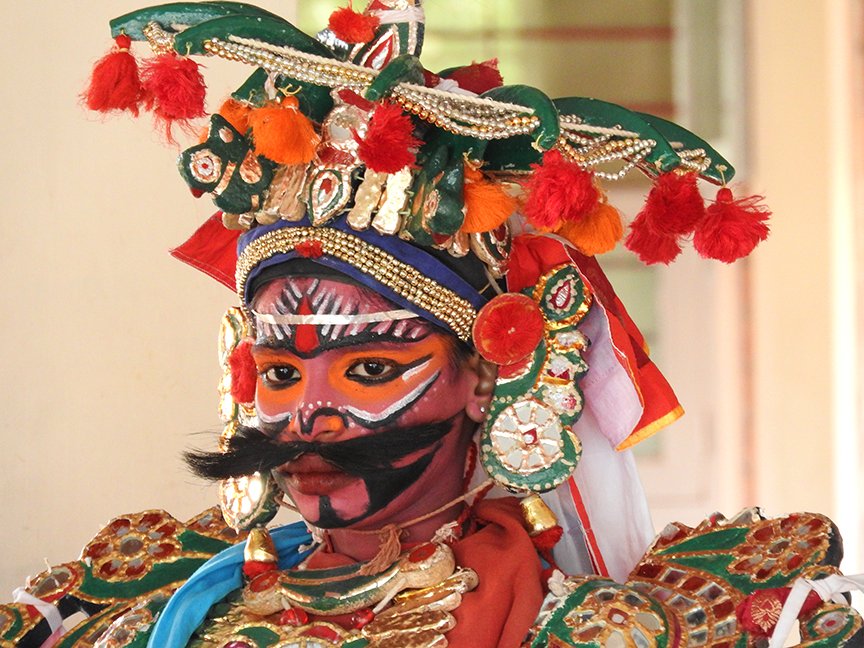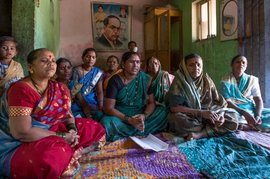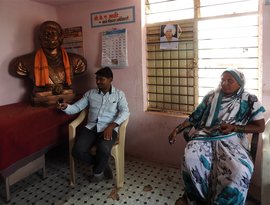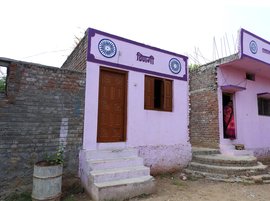It is Dussehra and the students gather in the main hall of the school in the morning for the puja and prayer songs.
Kattaikkuttu Gurukulam is a residential theatre school in Kanchipuram district of Tamil Nadu. Here, students are trained in Kattaikkuttu, a rural theatre form practiced in the state, along with regular school education up to Class 12. Most of the children are from underprivileged and economically deprived families.
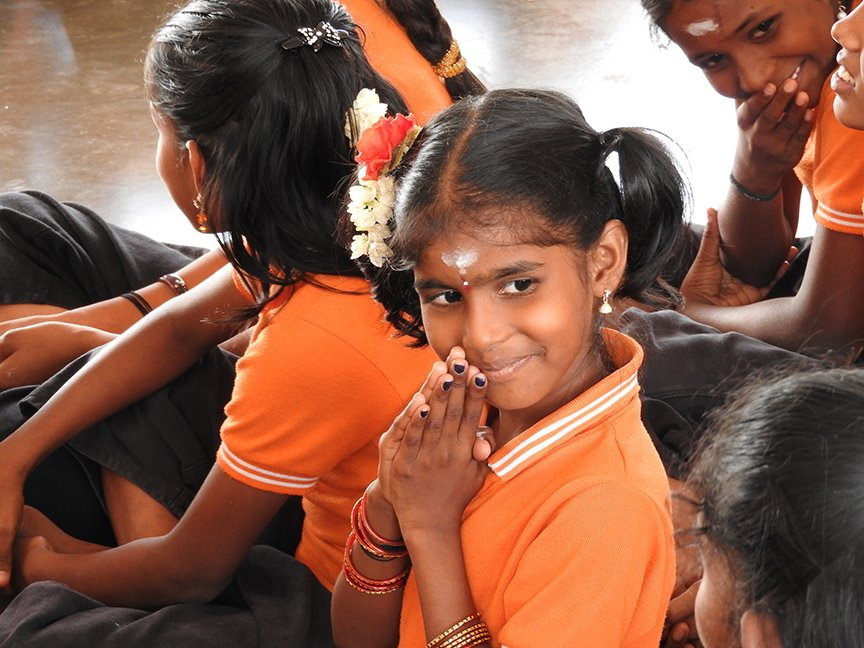
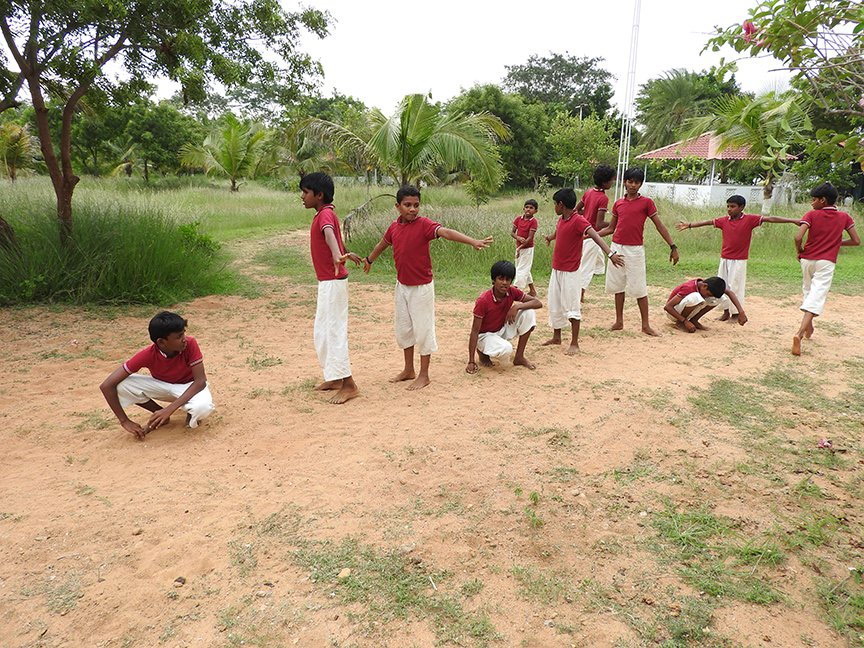
Left: Students on the day of Dussehra. Right: A game of kho-kho on a Saturday afternoon
The school is from 7.30 a.m. to 5 p.m. with classes alternating between formal education, Kattaikkuttu training and music lessons. Surrounded by greenery in the Punjarasantankal village, the school is about 85 kilometres from Chennai, and a 35-minute autorickshaw ride away from Kanchipuram town.
The students have classes through the morning and play team games in the afternoon like at any other school.
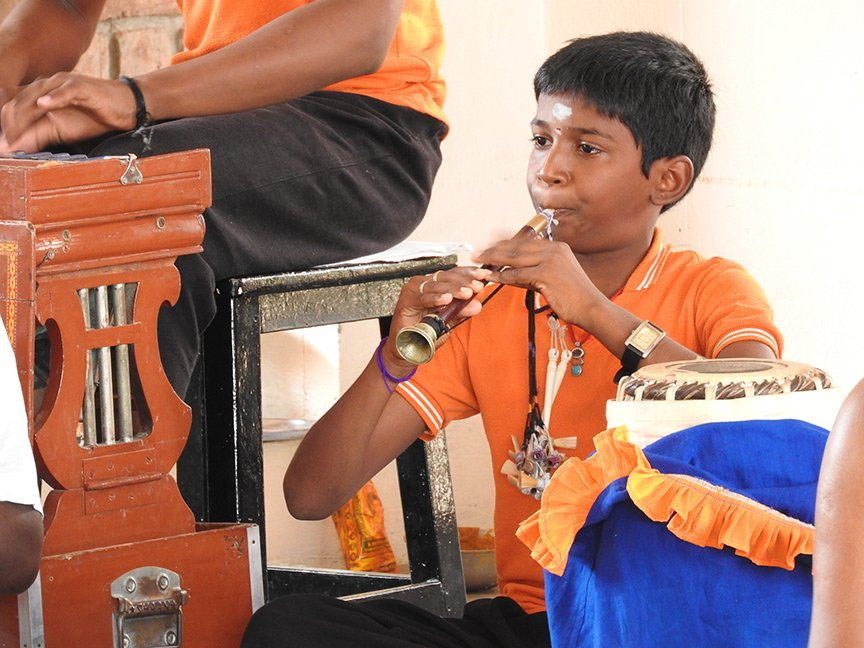
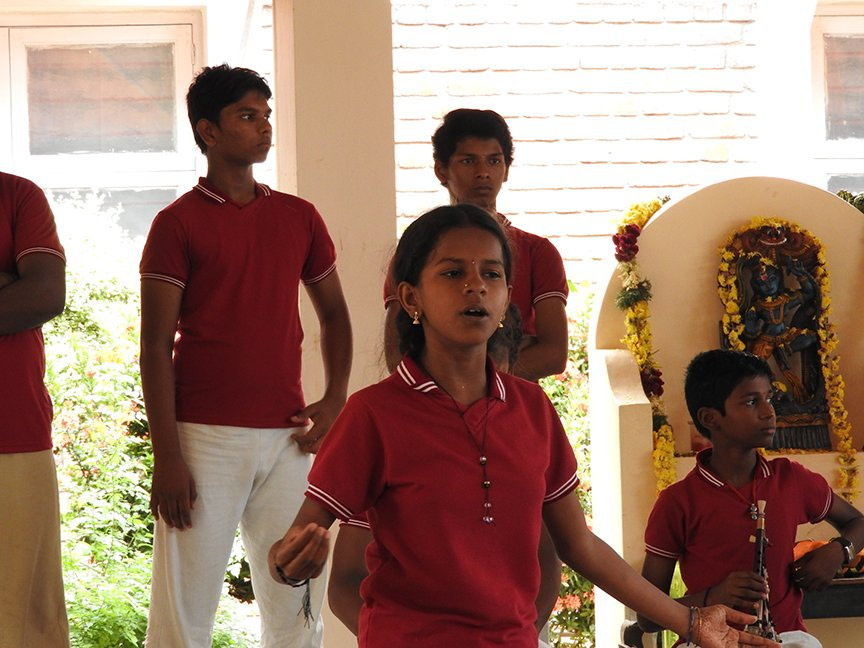
Left: P. Sasikumar playing the mukavinai . Right: K. Sivaranjani as Vikarna, the youngest and only Kaurava who speaks up to defend Draupadi
While only male actors have participated in Kattaikkuttu traditionally, at this school, girls too are trained in the art form. Both girls and boys enact roles of all genders.
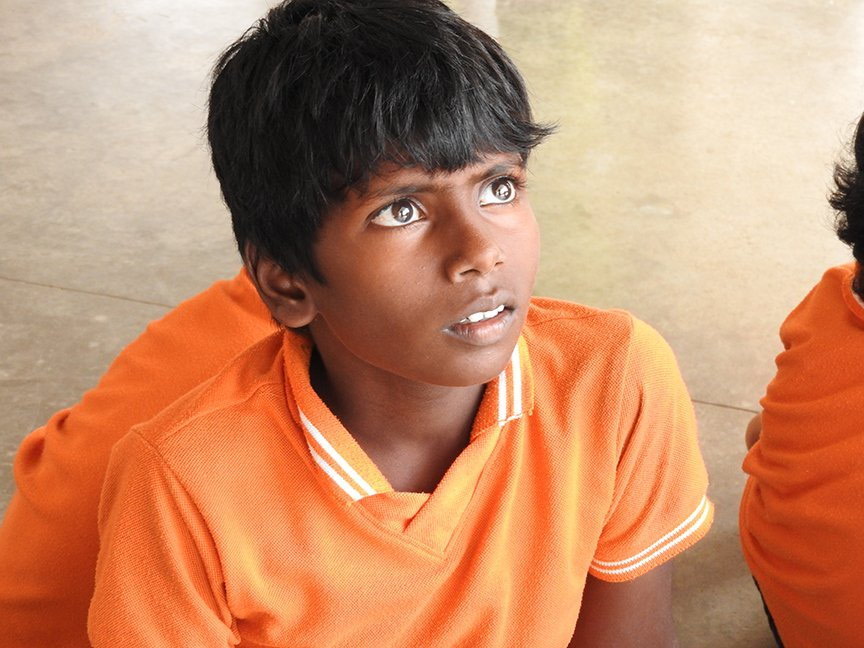
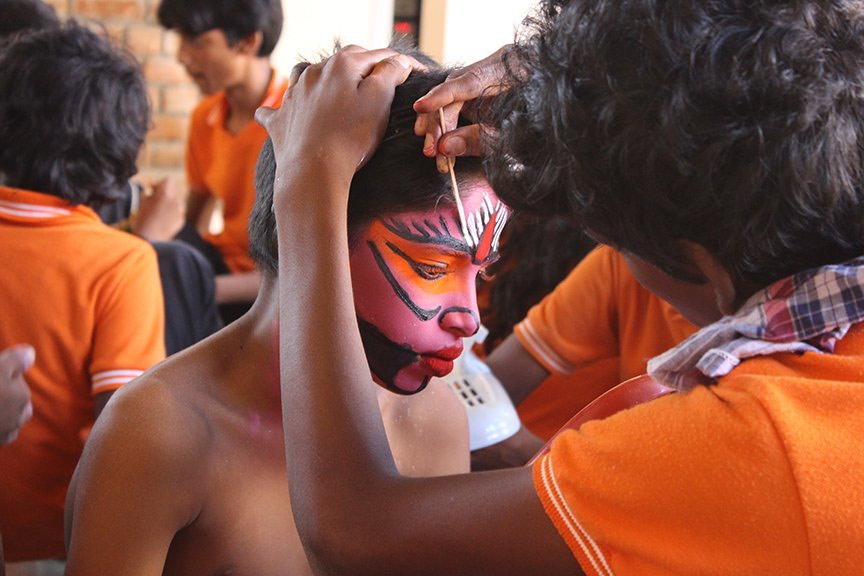
Left: A student listening to the teacher’s discourse on Dussehra. Right: Painting the actor’s face
A group of women attending a workshop on expressive arts at the school watch the teachers and children enact a passage from Mahabharata . K. Sivaranjani, studying in Class 9, plays the role of Vikarna, the youngest and the only Kaurava to speak up against his brothers in defence of Draupadi.
How did she feel performing the role of a man? “I was a little afraid,” she says, “as it is my first time in front of an audience.”
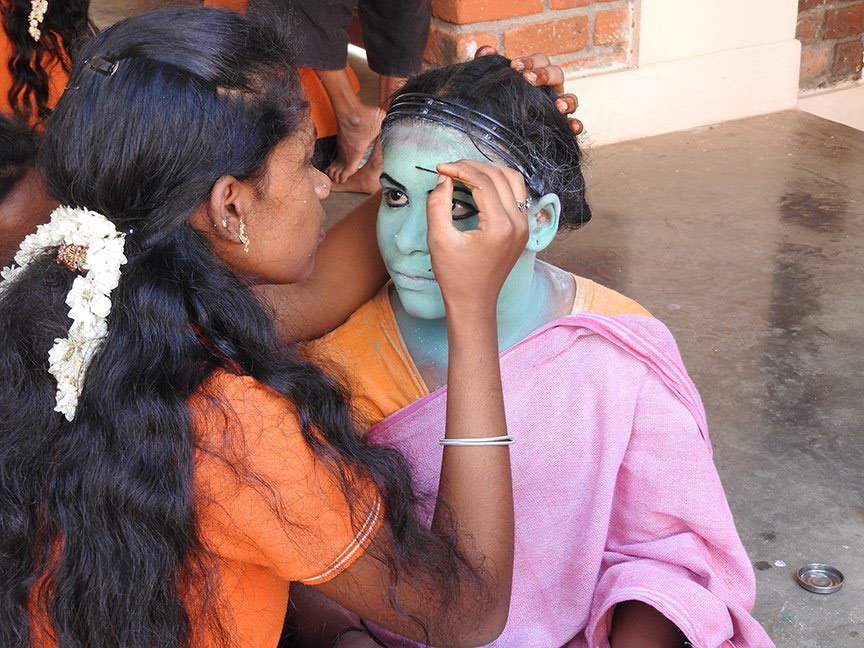
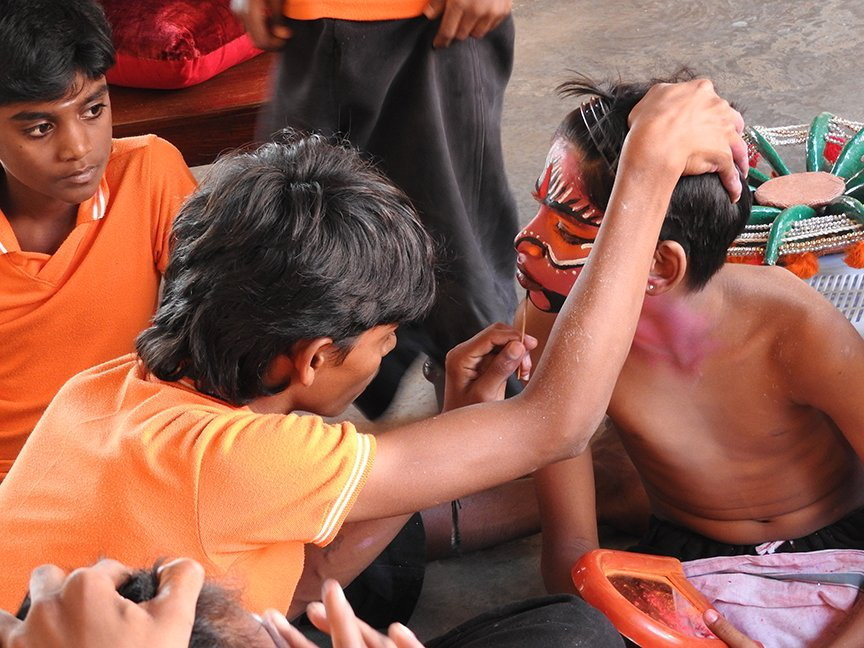
Left: S. Srimathi painting Bharathi’s face. Right: A young student studies the finer nuances of face painting
P. Rajagopal, principal teacher and founder of the school, gives a brief discourse after the worship and prayer songs on Dussehra day. The students listen in rapt attention.
After a special feast for lunch, it is time for the students to perform the Draupadi Kuravanchi act from the Mahabharata and the first thing to do is paint the faces of the performers. Makeup artists among the students get the actors ready. The dedication and patience of the 12 to 14-year-olds is evident as the makeup session goes on for an hour. First they apply the foundation layer, green for the girl and pink for the boys for this performance. After that, the painting of the eyes, eyebrows, lips, moustache, forehead, cheeks and jawline follows.
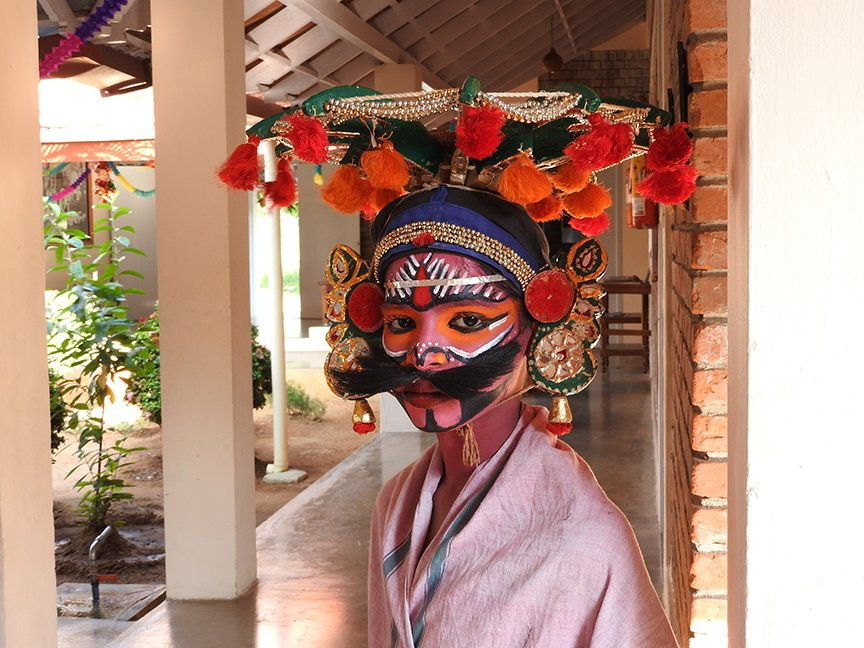
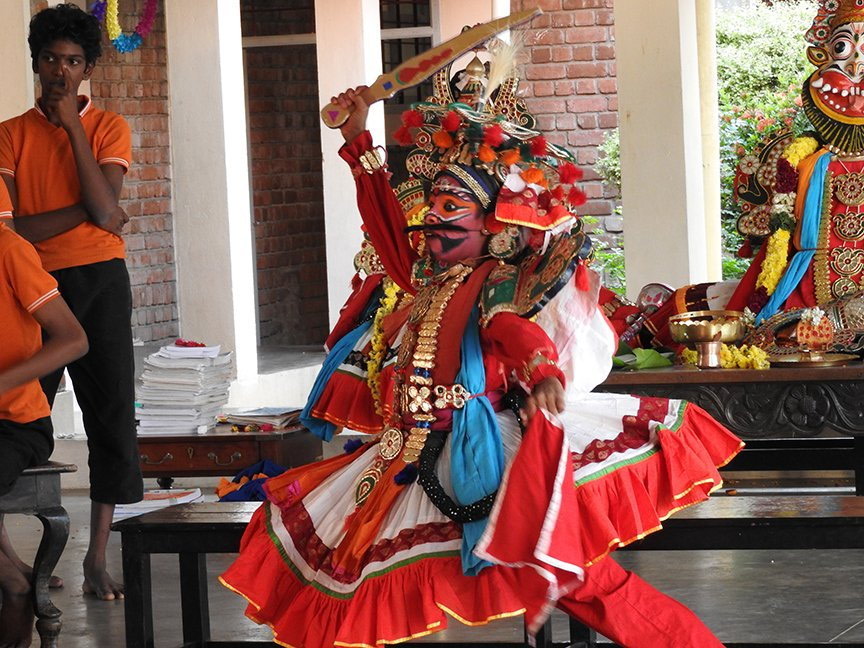
Left: Face and headdress is done. Right: c
Some of the younger students watch intently, trying to learn the intricacies and techniques of makeup.
After his face and headdress are done, N. Karthi leaves the hall to wear his costume.
The costume is as colourful as the fiery performance of Dushasana, the second among the Kaurava brothers.
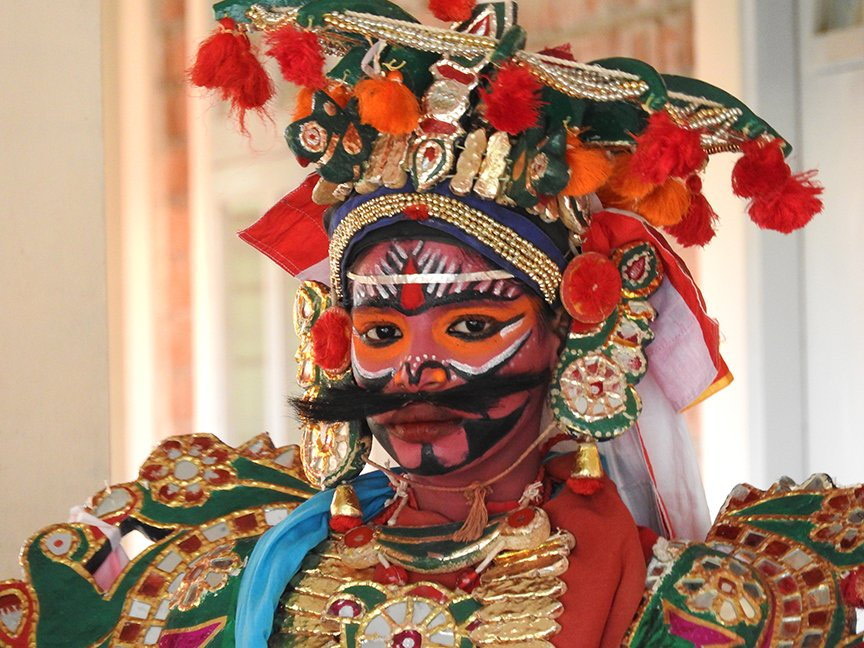
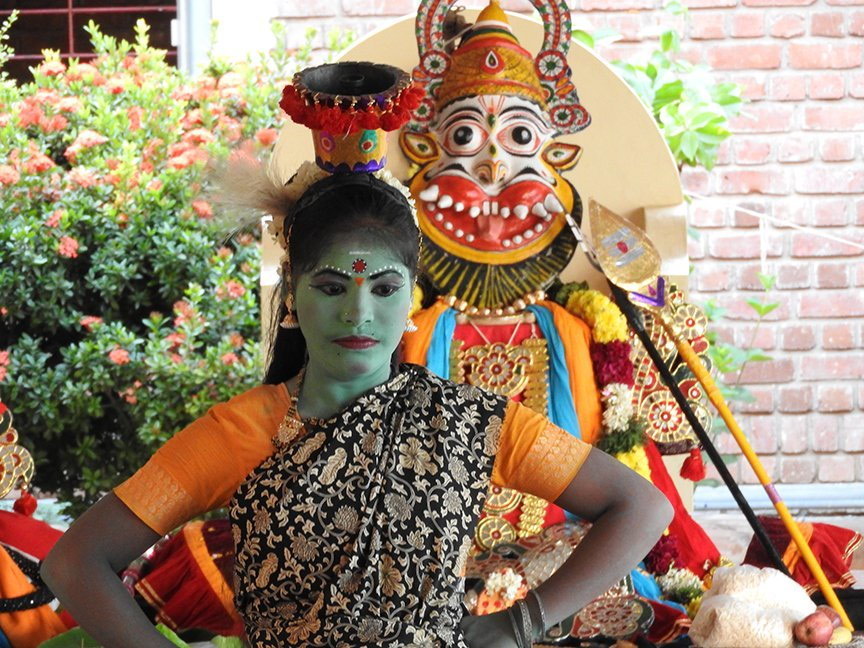
Left: N. Karthi as Dushasana. Right: A. Bharathi as Draupadi in the guise of a gypsy woman, Kuratti
Kattaikkuttu is staged in villages as an all-night play. No performance is complete without comedy. The clowns are an important part of the form, as they provide the subversive element wrapped in humour. They bring in satire, weave topical conversation into the act, and juxtapose the powerful with the poor as they poke fun at the strong from a weaker social position. They bring the lives of the village audience into the epic stories and make them a part of the narrative. In an all-night performance, the clowns bring relief from the darker elements in the stories.
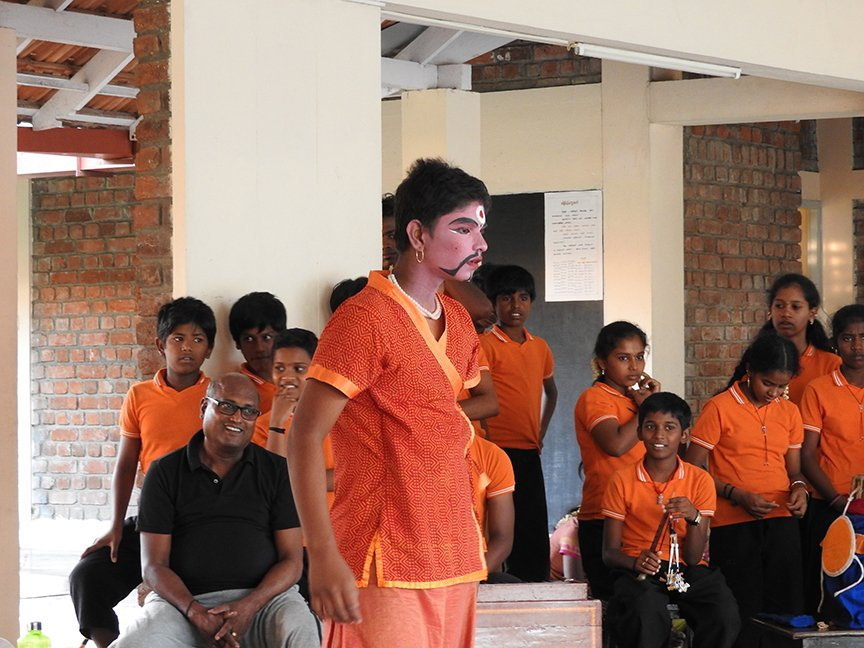
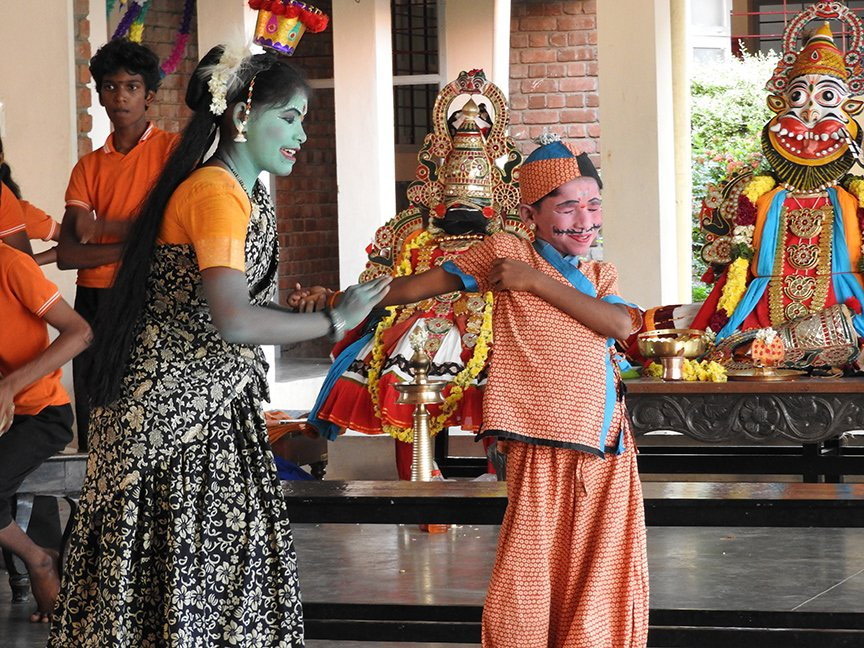
Left: A. Velan as the clown; teacher P. Rajagopal is seated behind. Right: Draupadi as Kuratti applies medicine to comedian M. Inbarasan's aching arm
The clown’s antics make even the musicians laugh.
Singing in unison is a part of Kattaikkuttu. Several students join in the singing while others play the harmonium,
mukavinai
and the
mridangam
.
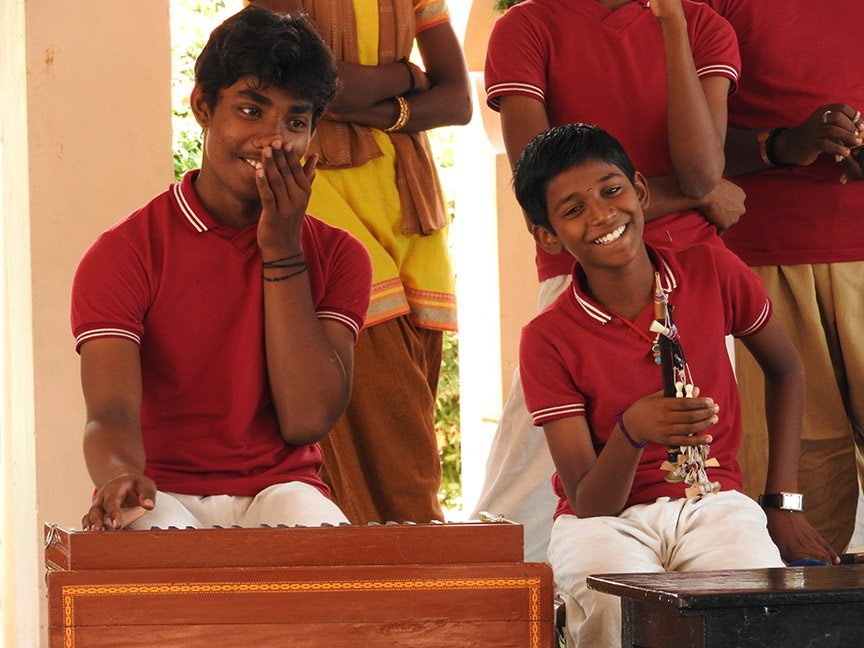
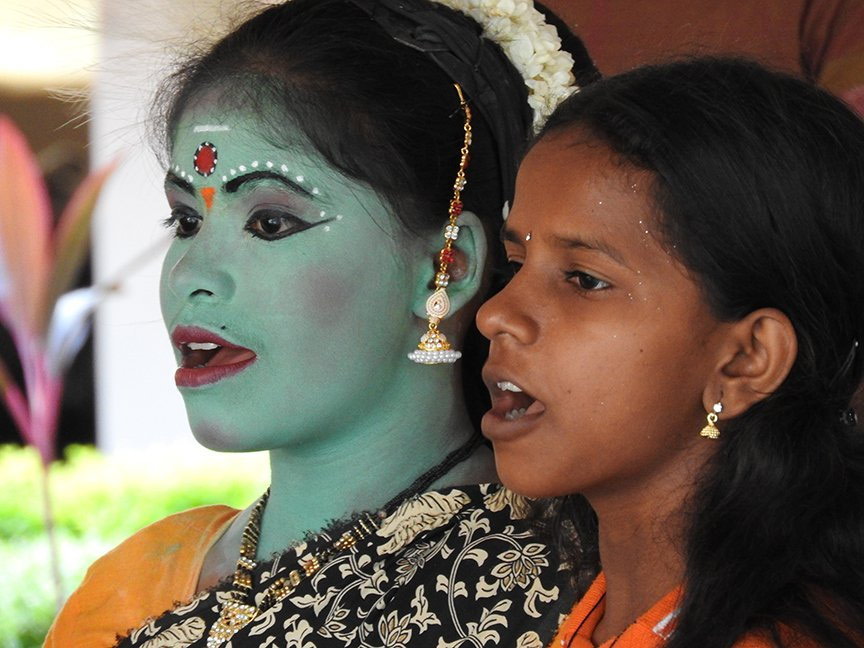
Left: R. Balaji on harmonium and P. Sasikumar on mukavinai laughing heartily. Right: Bharathi and Sivaranjani: perfectly synchronised singing
